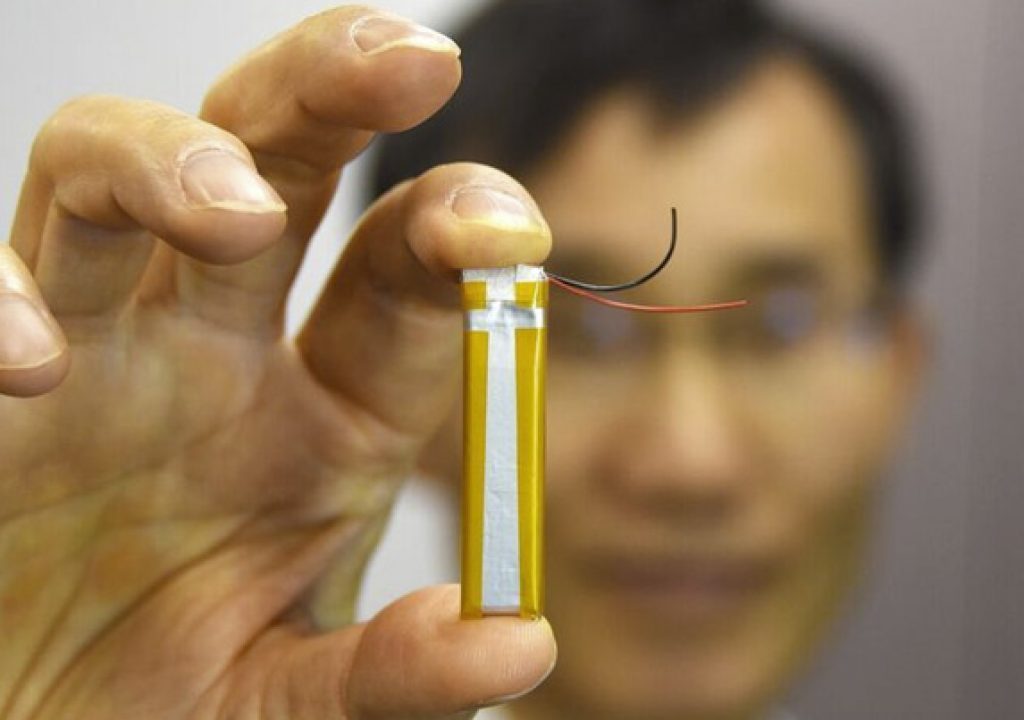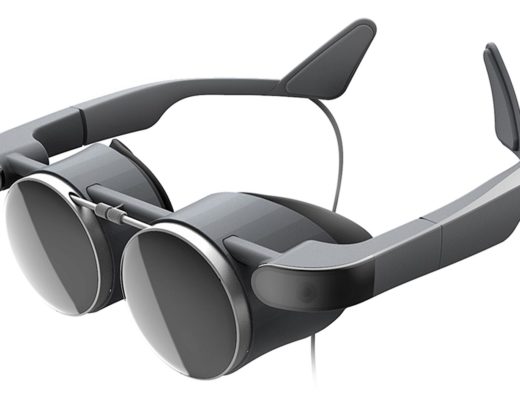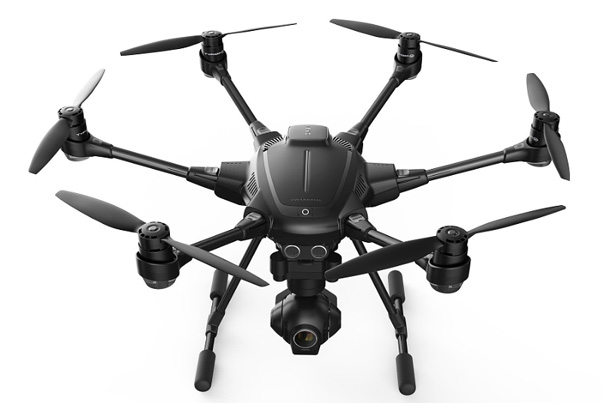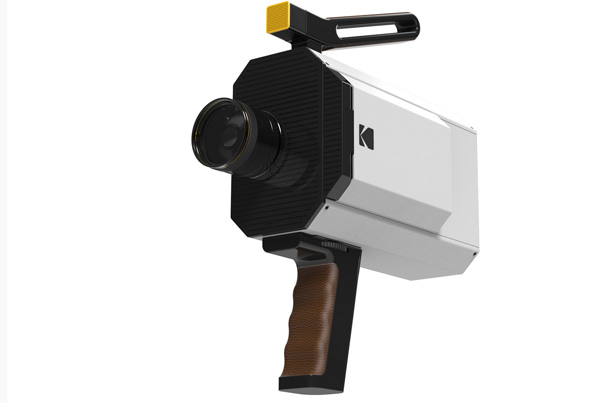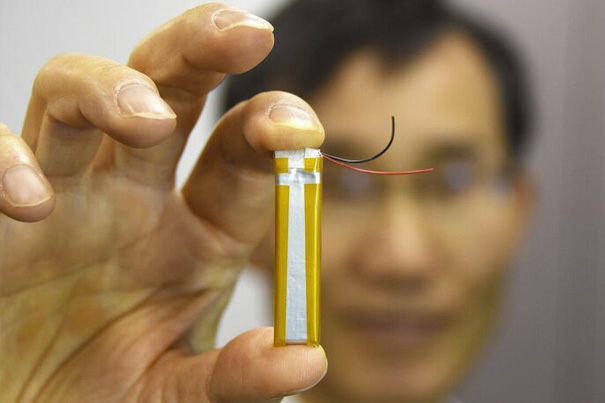
One of the problems designers face, when creating many of the wearable and portable devices so common today, is the dimension and weight of batteries used. Hitachi Maxell has the solution: a battery which is smaller and lasts longer.
Kopin Corporation announced that it has entered into an agreement with Hitachi Maxell, Ltd. to produce and market new high-capacity lithium-ion batteries for use in wearable products based on silicon oxide with carbon (SiO-C) in the anode. The new battery, according to a research by Hitachi Maxell, offers twice the energy density compared with conventional lithium-ion batteries. Compared with lithium-ion batteries with width under 13mm presented on websites of each company.
Under the terms of the agreement, Kopin will exclusively market the batteries to manufacturing customers under the brand name SiMax for use in wearable products. The first SiMax battery, shown at CES 2016, measures just 46×10.5×5.5mm with 400 mAh capacity. Initial production will begin in the second quarter of 2016 and the batteries will be used in Kopin’s Solos cycling eyewear product. But their use extends to other areas, and we may well see the technology translate into better batteries that last longer, something essential in today’s world.
Conventional Li-ion battery capacity has been increasing only gradually in recent years. The result has been a widening mismatch between what we’d like to do with mobile and wearable devices and what we can do. Now, the higher capacity, smaller and lighter SiMax batteries will close this gap and enable the performance and product designs that consumers require for wearable products and head-worn systems.
“We are pleased to be partnering with Kopin to commercialize the high-SiO-C-content battery technology, which provides unprecedented capacity in small form factors,” said Masao Okafuji, chief technology officer of Hitachi Maxell. “While it has been well known that the use of high-SiO-C-content anode can provide several times the energy density than the graphite anode used in today’s Li-ion cells, until now serious technical challenges prevented its use. We have now overcome these technical challenges and are ready to commercialize the first batteries using this new technology.”
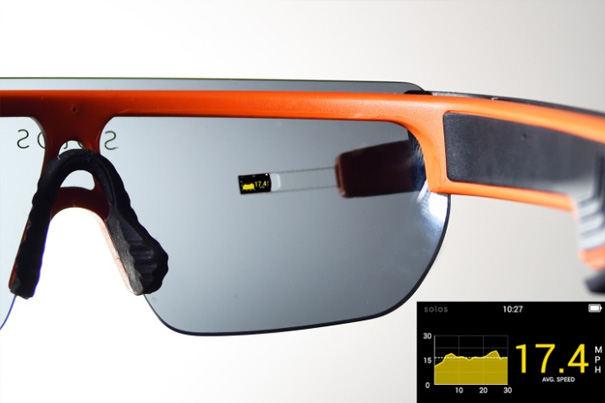
“Our collaboration with Hitachi Maxell represents a leap forward in battery technology and the wearables market,” said Dr. John C.C. Fan, president and CEO of Kopin. “Wearables will only reach their potential if the technologies inside them can support the best possible user experience. Smaller, longer-lasting, lighter batteries are a critical building block for the success of wearables, in addition to compact displays that provide large, high-resolution images and speech enhancement technology that provides reliable communication in all noise environments. Kopin, along with its partners, is leading the industry to develop and deliver these technologies that will propel the wearables market forward.”
The markets and applications for wearable computing devices are growing rapidly in areas such as sports, healthcare, manufacturing, warehousing, gaming, drone racing and others. In all of these applications, small battery size and weight, and long run-time are critical factors for user satisfaction. The SiMax technology will enable significant improvements in product design and performance for all of these applications.
The new battery will provide energy for Kopin’s Solo, which is a testimony of the potential of the battery in the design of wearable devices. Presented last September at the Interbike trade show, the Solos, Kopin’s own brand of cycling smart sunglasses uses the battery and Kopin’s Vista display technology in a smart eyewear design that meets aesthetic and functional requirements. The Vista display offers the world’s smallest smart glass display. The Pupil display module with only 2mm height is part of Kopin’s Vista portfolio of technologies featuring Kopin’s ultra-compact Cyberdisplay LCD and miniature optics that project a high-resolution, high-brightness image comparable in size to a smart phone display. Using Kopin Vista technology, smart eyewear can look like a normal pair of glasses. The 2mm displays can be seen at CES 2016.
“Kopin believes head-worn devices will be the ultimate wearable device because most human senses are around our head,” said Dr. John C.C. Fan, President and CEO of Kopin Corporation. “To be widely accepted by users, these devices should be stylish, lightweight, comfortable, and, most importantly, a familiar look. Our super compact Vista products allow the design of the smart eyewear that meets these requirements. Whether you are protecting the free world, checking your warehouse inventory, monitoring your heart rate while cycling, or just looking up directions to a new restaurant – Kopin technology will allow us all to keep our heads up and take it all in.”
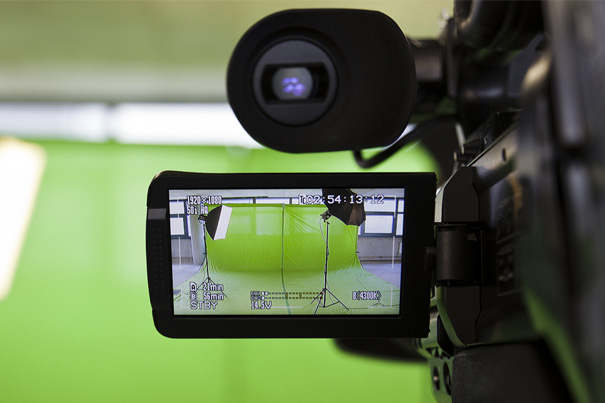
The announcement expands the Vista product portfolio available to OEM customers, which includes Pupil and Pearl display modules. The Pupil modules are intended for consumer eyeware products and the Pearl modules are for enterprise headsets. Pupil modules are offered in two resolutions: WQVGA (428 x 240) and nHD (640 x 360). Pearl displays are offered in three resolutions: WQVGA (428 x 240), nHD (640 x 360) and WVGA (854 x 480).
Kopin is not a stranger to the world of image. Their CyberDisplay, created in 1999, was the first electronic viewfinder for camcorders. This technology replaced the decades’ old cathode ray tube displays, leading to more than 30 million units. Kopin also has a long history of working with the military to create advanced optical systems based on its ultra-small microdisplay, optic, backlight and electronic technologies. From fighter pilot helmet displays, night vision binoculars to thermal weapon gunsights, Kopin’s technology is designed for the toughest environments, which means it’s rugged enough for anything you throw at it.

Filmtools
Filmmakers go-to destination for pre-production, production & post production equipment!
Shop Now